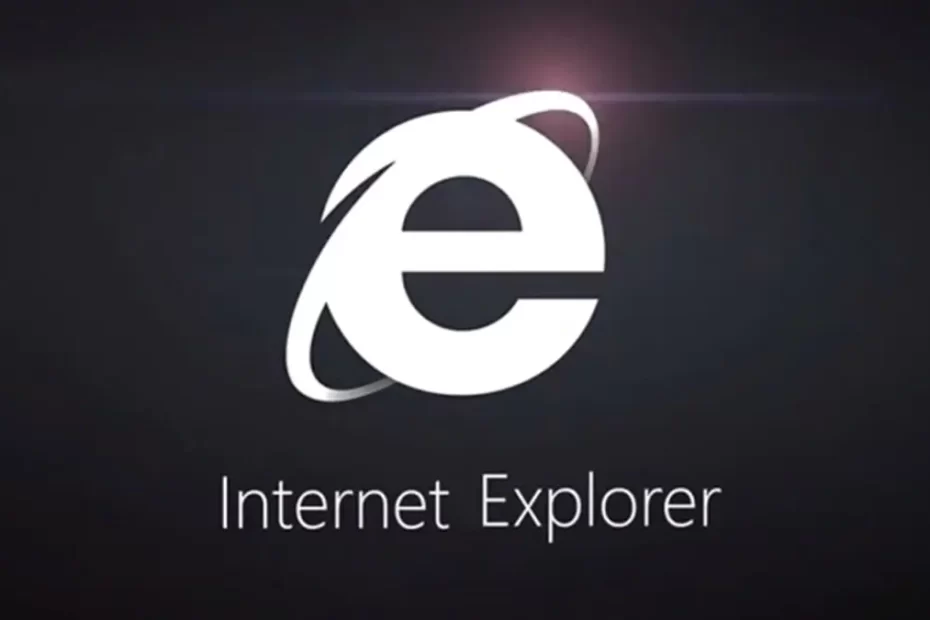Microsoft has said for years that it plans to replace the IE browser with a more secure option: MS Edge. Today, June 15, 2022, IE11 ends support for most users. IE will not receive any support/patches in the future. Internet Explorer is also unavailable on Windows 11, where the new Chromium-based Microsoft Edge is the default web browser. Microsoft is killing IE on the vast majority of consumer PCs.
Microsoft will start to redirect Internet Explorer users to its Edge browser automatically. The update will apply to all the users over the next few months. Consumers- users or business owners who use the browser will initiate to witness a prompt soon about the new application, which will redirect them to the Edge browser. But Microsoft is not ending support for Internet Explorer on Windows 8.1, Windows 7 Extended Security Updates for businesses, and the business versions of Windows 10 and Windows Server. Microsoft will likely end support for Internet Explorer for those operating systems at some point in the future, but not now.
If your PC is affected, it does not mean that IE will immediately stop working. Instead, Microsoft will retire IE in two phases. First, the devices will be progressively redirected from IE to Microsoft Edge over the next few months. Microsoft says that will not happen for all devices at once. That will mean two things, according to Microsoft. First, your taskbar Internet Explorer icon will redirect to Microsoft Edge. And second, a reload in IE Mode button will be added to the taskbar.
Following that, however, Microsoft will permanently disable the IE application via a Windows Update. When that occurs, it will be the final nail in the coffin for Internet Explorer. However, Microsoft is not saying when that will happen.
Internet Explorer will live on with Edge IE mode.
Though the browser itself is officially dead, remnants of Internet Explorer will live on through this decade. As The Verge reports, the Trident MSHTML engine powering IE will exist within IE mode in Microsoft Edge, a feature that lets users and companies access legacy sites through the new Edge browser. For a hit of nostalgia, when a site loads in IE mode, the now-retired logo still appears in the left-side navigation bar. Microsoft says it will support IE mode in Edge at least through 2029.
IE Mode for Microsoft Edge will be available in the Settings menu within Microsoft Edge. Essentially, IE Mode places a secure, sandboxed version of Internet Explorer within Edge, used by corporations and consumers alike to access sites in IE, either because of corporate requirements or just plain familiarity. But Microsoft feels that Edge is a better tool to access those sites, anyways.
The redirection process to Edge from Explorer will transfer the user data- passwords, favorites, and other settings from Internet Explorer. The Edge browser will have a reload in IE mode option, which will be available in the toolbar- this will make it easy for the user to access that special mode that Microsoft has built in the Edge browser. IE mode will support the older ActiveX controls.
IE Mode for Edge will be phasing out, too.
What’s somewhat new is that Microsoft plans to end support for Edge’s IE Mode in the future, too. We don’t have a comprehensive picture of how this all works, but here’s what we do know: Microsoft will end support for IE Mode within Windows 10 2019 LTSC on Jan. 9, 2029; for Windows 8.1 on Jan. 10, 2023; and Windows 7 (Extended Support) on Jan. 15, 2023. Microsoft has not given a timeline for phasing out the IE11 app for Windows 8.1 and 10. We can’t say that you won’t be able to access IE on Windows 7 and 8.1 after those cutoff dates, too.
As the Internet Explorer retires today, all the supported versions of Windows 10 Home, Pro, Enterprise, Education, and IoT will be highly impacted today, as per The Verge. The Internet Explorer might exist for a little longer so that the users could understand how the Edge browser is taking over the platform. And Microsoft has made it very clear by stating: “the future of Internet Explorer is in Microsoft Edge.”
The reality, however, is that virtually all modern browsers are free, safe, and convenient to adopt. Many include procedures to migrate bookmarks, passwords, and more from an older browser like Internet Explorer through to a new browser like Google Chrome, Firefox, Opera, Brave, and others. I’ve been encouraging you to switch browsers for a while now, and the imminent demise of Internet Explorer is just another great reason to try other browsers.
Read More: Windows 11 is now available to Windows Insiders – can your PC run it?
Hi, I’m Mithunraj Kurunthil, an aspiring blogger with an obesession for all things tech. This blog is dedicated to helping people learn about technology.

Awesome work man!
Thank you for your feedback.